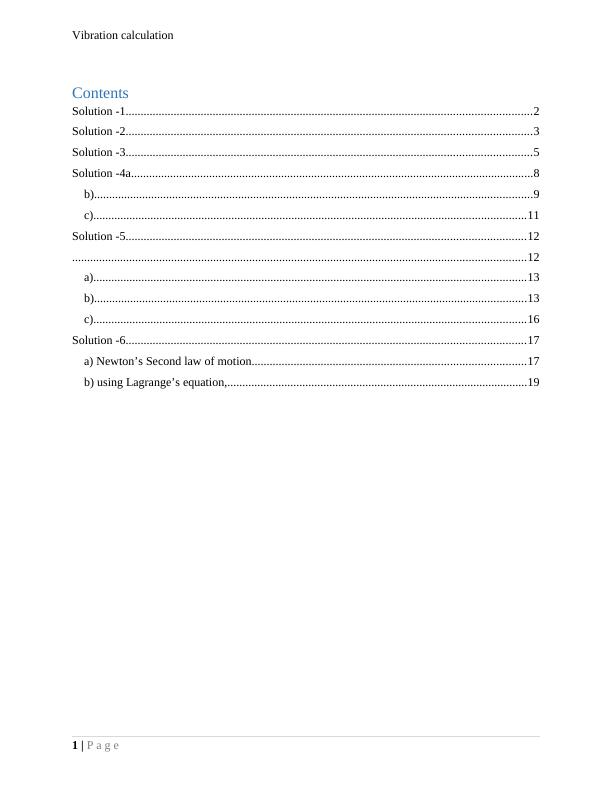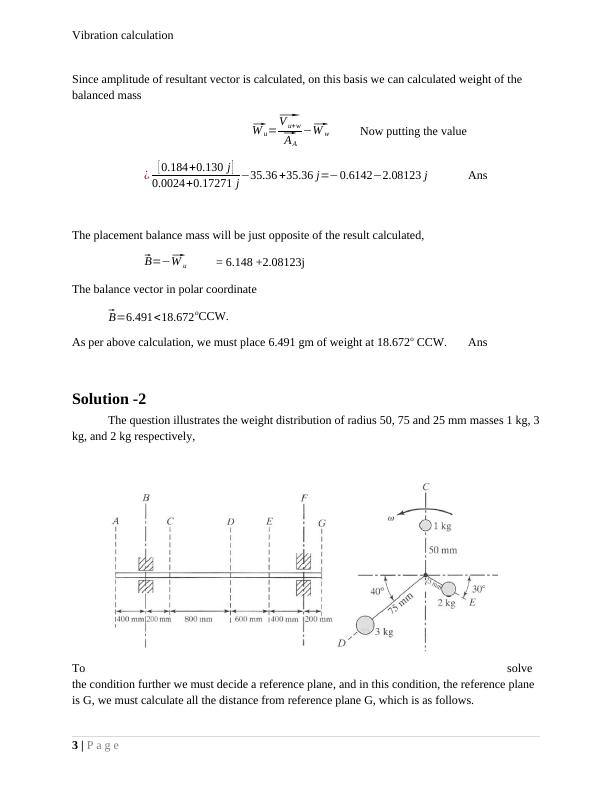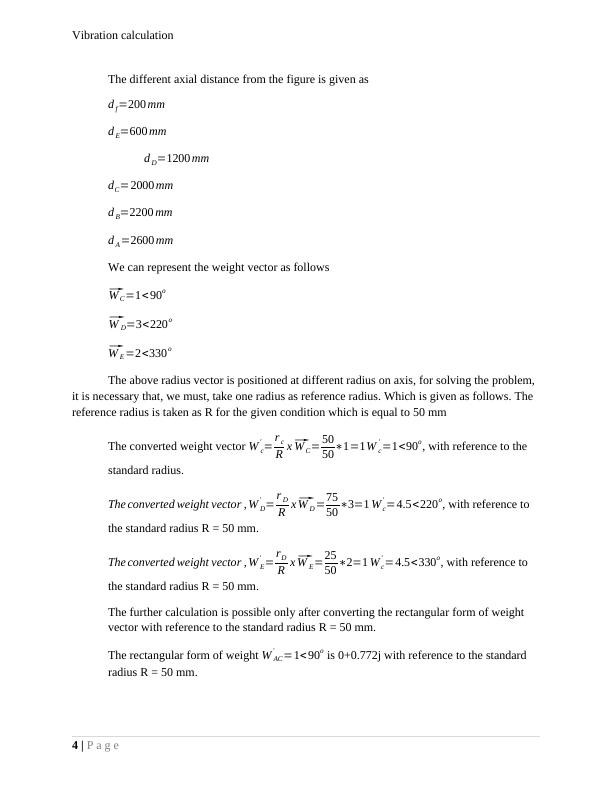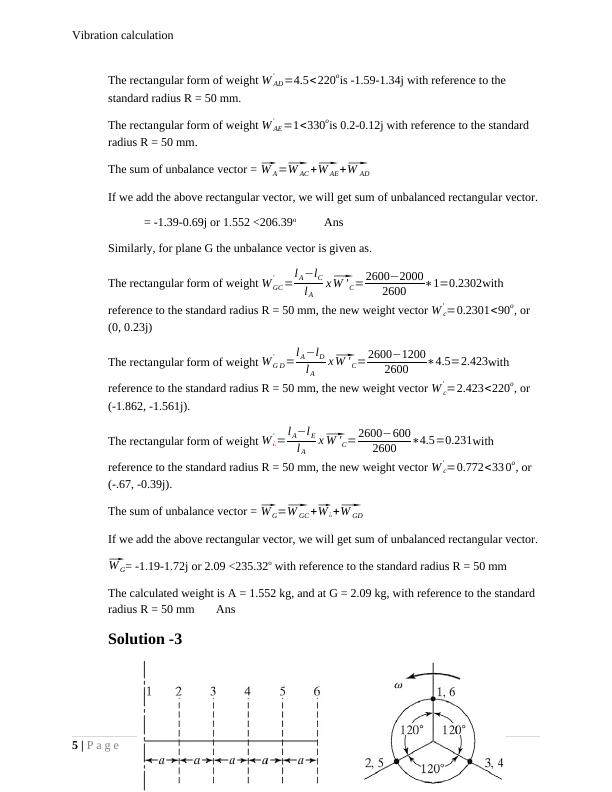Balancing and Vibration Calculation for Crank Shaft and Weight Distribution
This assignment involves solving two tutorial problems related to vibration and machine dynamics. The first problem requires finding the magnitude and angular position of a balancing weight, while the second problem involves calculating the masses and radii of objects on a shaft supported at bearings.
25 Pages6447 Words121 Views
Added on 2023-06-03
About This Document
This article covers the calculation of balancing in a single plane, weight distribution of radius 50, 75 and 25 mm masses, and the outline of crank shaft. It also explains the calculation of forces along the axis, x, y, and z direction. The article provides solutions to problems related to balancing and vibration calculation for crank shaft and weight distribution.
Balancing and Vibration Calculation for Crank Shaft and Weight Distribution
This assignment involves solving two tutorial problems related to vibration and machine dynamics. The first problem requires finding the magnitude and angular position of a balancing weight, while the second problem involves calculating the masses and radii of objects on a shaft supported at bearings.
Added on 2023-06-03
ShareRelated Documents
End of preview
Want to access all the pages? Upload your documents or become a member.
Numerical on Balancing and Vibration
|16
|3893
|424
Numerical Solutions for Mechanical Vibration
|28
|7325
|330






